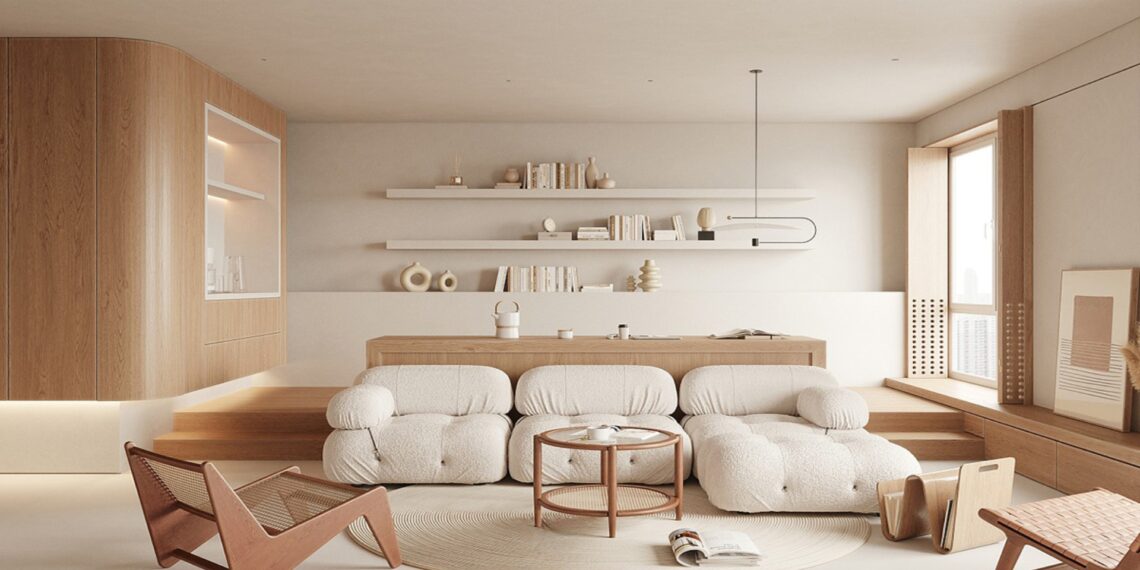Understanding the Principles of Minimalist Home Decor
Minimalist home decor emphasizes simplicity and functionality, creating a serene and uncluttered living space. It’s about thoughtfully curating your belongings and prioritizing quality over quantity for a calming environment.
1. Embracing a Neutral Color Palette
A minimalist aesthetic often begins with a neutral color palette. Think whites, grays, beiges, and soft pastels. These colors create a sense of calm and spaciousness. Using a consistent color scheme throughout your home provides a cohesive and uncluttered look. While pops of color are acceptable, they should be used sparingly and intentionally to avoid overwhelming the space. The goal is to create a backdrop that allows the architectural details and carefully selected furniture to stand out, rather than competing with a vibrant color scheme.
2. Prioritizing Functionality and Purpose
Every item in a minimalist home should serve a purpose. Before bringing anything new into your space, ask yourself if it’s truly needed and how it will enhance your daily life. Choose furniture that is both stylish and functional, such as a sofa with built-in storage or a coffee table that doubles as a workspace. Avoid accumulating unnecessary items that clutter your surfaces and drawers. By focusing on functionality, you’ll create a space that is not only beautiful but also practical and efficient.
3. Decluttering and Simplifying Your Space
Decluttering is an essential aspect of minimalist home decor. Regularly go through your belongings and remove anything that you no longer use, need, or love. Donate, sell, or discard these items to free up space and create a sense of order. Focus on keeping surfaces clear and organized. Store items out of sight in cabinets, drawers, or storage containers. The goal is to create a space that is free from distractions and promotes a sense of calm and focus.
4. Choosing Quality Over Quantity
Minimalism is about investing in fewer, higher-quality items that will last for years to come. Instead of buying cheap, trendy pieces that you’ll quickly tire of, choose timeless designs that you’ll love for a long time. Focus on natural materials, such as wood, leather, and linen, which add warmth and texture to a minimalist space. By investing in quality, you’ll create a home that is both stylish and sustainable.
The Role of Color Palettes in Creating a Serene Ambience
Color palettes are fundamental in interior design, significantly impacting the mood and atmosphere of a space, particularly in fostering a serene ambience conducive to relaxation and tranquility.
1. Understanding Color Psychology
Color psychology explores how different hues affect human emotions and behavior. For instance, blues and greens are often associated with calmness and nature, respectively, making them ideal for creating a serene environment. In contrast, vibrant reds and yellows can be energizing but may overwhelm a space intended for relaxation. Choosing colors consciously, based on their psychological impact, is essential for achieving the desired ambience in your home. This involves considering the intensity, saturation, and overall balance of colors within a palette.
2. Harmonious Color Combinations
Creating a serene ambience is less about individual colors and more about how they interact. Harmonious color combinations often involve analogous colors (those next to each other on the color wheel) or complementary colors (those opposite each other). For example, pairing a soft blue with a muted gray creates a tranquil and sophisticated atmosphere. Alternatively, combining sage green with a touch of warm beige brings a sense of nature indoors while maintaining a cozy feel. The key is to ensure a balanced and visually pleasing arrangement that promotes relaxation.
3. The Impact of Lighting
Lighting plays a crucial role in how colors are perceived and experienced. Natural light tends to enhance the true tones of colors, while artificial light can alter them significantly. Warm lighting, such as incandescent or soft white LEDs, creates a cozy and inviting atmosphere, complementing warmer color palettes. Cool lighting, like daylight LEDs, can make colors appear sharper and more vibrant, which might suit cooler palettes. Understanding how lighting interacts with your chosen color palette is vital for achieving the desired level of serenity.
4. Incorporating Texture and Materials
Texture and materials can further enhance the impact of a color palette. Soft, tactile materials like linen, velvet, and wool can add depth and warmth to a space, complementing calming colors. Conversely, smooth, reflective surfaces like glass and metal can create a more modern and airy feel. By carefully selecting textures and materials that align with your chosen colors, you can create a multi-sensory experience that promotes relaxation and well-being. Consider incorporating natural elements like wood and stone to further enhance the connection to nature and create a serene environment.
Innovative Lighting Ideas for Minimalist Spaces
Minimalist spaces thrive on simplicity and functionality. Thoughtful lighting enhances these qualities, creating a serene and uncluttered atmosphere.
1. Recessed Lighting
Recessed lighting, also known as pot lights, provides a clean and seamless look. Installed directly into the ceiling, they offer ambient lighting without taking up any visual space. Dimmable LED recessed lights are a popular choice for their energy efficiency and ability to adjust brightness according to the mood or task. Strategic placement is key, focusing on areas where light is most needed, such as above work surfaces or reading nooks.
2. Strip Lighting
LED strip lighting is incredibly versatile for minimalist designs. These flexible lights can be installed under cabinets, along shelves, or behind furniture to create a subtle and diffused glow. They add depth and dimension to a space without being visually intrusive. Consider using warm white LED strips to create a cozy and inviting atmosphere, or color-changing LEDs to add a touch of personality.
3. Statement Pendant Lights
While minimalism often emphasizes simplicity, a single statement pendant light can become a focal point in a room. Choose a pendant with a minimalist design, such as a geometric shape or a simple glass shade. Ensure the size and scale of the pendant are appropriate for the space to avoid overwhelming the room. Position it above a dining table, kitchen island, or in a living area to create a stylish and functional lighting solution.
Selecting Furniture Sets to Enhance Minimalist Interiors
Choosing the right furniture sets is crucial for achieving a minimalist interior that feels both stylish and functional. The key is to prioritize simplicity, clean lines, and high-quality materials.
1. Embracing Neutral Color Palettes
Minimalist interiors thrive on neutral color palettes. Opt for furniture sets in shades of white, gray, beige, or soft pastels. These colors create a sense of spaciousness and tranquility. According to a 2024 report by “Home & Décor Trends,” homes that incorporate neutral colors are viewed as more comfortable and inviting, and are therefore more popular with those looking to achieve a minimalist aesthetic. Consider furniture with a monochromatic scheme to further enhance the minimalist feel.
2. Prioritizing Functional Design
Every piece of furniture should serve a purpose. Look for sets that offer storage solutions, such as sofas with hidden compartments or coffee tables with drawers. Multifunctional furniture is ideal for maximizing space and minimizing clutter. For example, modular sofas can be rearranged to suit different needs, and expandable dining tables are perfect for small spaces.
3. Opting for Clean Lines and Simple Shapes
Choose furniture with clean lines and simple shapes to maintain a minimalist aesthetic. Avoid ornate details or excessive embellishments. Geometric designs and streamlined silhouettes are excellent choices. Look for pieces with a low profile to enhance the sense of openness and airiness.
4. Focusing on Quality Materials
Invest in furniture sets made from high-quality materials that will stand the test of time. Natural materials like wood, leather, and linen are excellent choices for minimalist interiors. These materials add warmth and texture to the space while maintaining a sense of understated elegance. Avoid synthetic materials that can look cheap and detract from the overall aesthetic.
5. Creating a Cohesive Look
When selecting furniture sets, ensure that all pieces complement each other in terms of style, color, and material. A cohesive look is essential for creating a harmonious and balanced minimalist interior. Consider purchasing furniture from the same collection or brand to ensure a consistent aesthetic.
Integrating Wall Art to Complement Minimalist Design
Minimalist design thrives on simplicity and functionality, but that doesn’t mean it has to be devoid of personality. Wall art can introduce visual interest without disrupting the clean aesthetic.
1. Choosing the Right Color Palette
Color is crucial in minimalist spaces. Select wall art with a color palette that complements the existing décor. Consider artwork featuring muted tones, such as grays, beiges, and whites, to maintain a serene environment. A strategic pop of color, like a single red accent in an otherwise neutral piece, can add visual interest without overwhelming the space. Alternatively, black and white photography or graphic prints offer a timeless and sophisticated touch that seamlessly integrates with minimalist aesthetics.
2. Selecting Appropriate Size and Scale
The size of the wall art should be proportional to the wall and the furniture around it. A large, impactful piece can serve as a focal point in a room, while smaller pieces can be grouped together to create a gallery wall effect. However, in a minimalist setting, it’s often best to opt for fewer, larger pieces rather than many small ones to avoid visual clutter. Consider the scale of the artwork in relation to the overall room dimensions to achieve a balanced and harmonious look.
3. Focusing on Texture and Material
Beyond color and size, consider the texture and material of the wall art. A canvas print offers a classic and versatile option, while framed art with a sleek, thin frame can enhance the minimalist aesthetic. Experiment with different materials like metal or wood to add subtle textural contrast. The key is to choose materials that complement the existing elements in the room and contribute to the overall sense of simplicity and sophistication.






